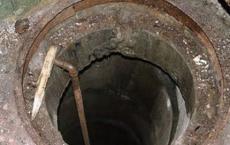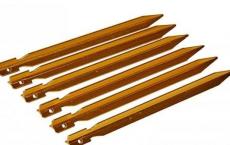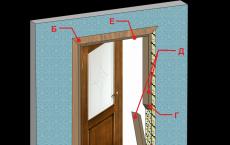Do-it-yourself metal machine
Thanks to lathes for metal, a person gets the opportunity to make some parts on his own. It is not always possible to buy a part for a car or special equipment.
And most often, not because there is not enough money, just when it comes to old Soviet special equipment or automotive products, many models are no longer produced. But nevertheless, this does not deprive the user of the opportunity to use them. Do-it-yourself metal lathes make it possible to do everything you need at home.
Why buy a metal lathe when you can make one yourself. It's not that difficult, and all you need is the availability of drawings, a little patience and old electrical engineering. Let's look at how to make such equipment yourself.
TV 16 screw-cutting
The principle of operation of any lathe is the processing of a part during its rotation. Thus, the cutter inserted into the plane of rotation, upon contact with the workpiece, will remove unnecessary elements. Such equipment is amenable to automation, so that the operator is able to:
- Perform longitudinal turning of a cylindrical workpiece with a smooth or stepped surface;
- Process ledges or grooves in the future part;
- To perform a groove of external or internal surfaces of a conical shape;
- Carry out threading, both internal and external, using a cutter or drill;
- Reaming or countersinking holes in a metal workpiece;
- Cut off excess parts or cut grooves;
- Perform knurling of the corrugated surface of the workpiece.
The main purpose in the use of a metal lathe is the processing of shafts, bushings or discs. Thus, a person gets the opportunity to make an axis, a flywheel, sprockets, various liners, etc. from the workpiece. Also on a universal lathe, you can perform the processing of body parts.
There is a certain classification of turning equipment. They are divided as follows
- On a turning basis. There are as many as 9 subgroups when dividing equipment in this way.
- Size range. Classification is performed depending on the diameter of the workpiece that you will process.
- The level of specialization. Depending on the profile of the work performed and the capabilities of the equipment.
- The accuracy class of the machine.
The most famous and used for the home workshop are screw-cutting lathes.
They gained their popularity back in the Soviet years, when they taught the younger generation how to process metal parts. The main purpose of the machines of this group is just the training of specialists to work with more complex equipment.
This implies ease of operation and mastering the machine. As well as a high level of safety and minimum safety requirements for the operator.
Now such equipment is produced in a modern way. Such models have increased functionality, designed for the operation of the enterprise, therefore, it is not advisable to install such equipment at home.
It will be expensive - there is no point in overpaying for functionality that you will never use in your life.
The old TV-16 machines, which were equipped in almost all labor rooms and production workshops for training specialists in educational institutions, are ideal for home use. The problem is that getting such equipment even from a reservation is very problematic.
You can, of course, buy from the photo on Avito, but you buy it from your hands, and it’s not a fact that the machine will last you a long time after the old owner.
It is best to do it yourself, especially since there is nothing complicated about it. You will need tools and materials that are not a problem to get. Having built a metal machine with your own hands, you will not only receive equipment for working with blanks, but also save a lot of money on the purchase and services of turners.
How the machine works - important structural elements

Construction scheme.
Any equipment must have a basis, without which it will not function. In a screw-cutting lathe, such structural elements are:
- Front and rear headstock;
- The bed or frame, which is the basis for the equipment;
- Electric drive;
- Control centers - driven and leading parts of the machine;
- A handpiece where the operator will rest the cutting tools for processing the part.
This can also include grounding and a protective screen. The first will ensure you are safe from electric shock, and the second will protect you from getting shavings in your face.
The unit will be installed on a special steel. If you make this equipment yourself, such a bed is a frame.
Advice: it is best to choose a high-quality and durable metal for the base. The stronger the frame, the more securely the equipment will be fixed. This eliminates the rattling of the screw-cutting unit.
A tailstock will be installed along the frame. This device is mobile. The front is stationary. It is connected by a belt drive to the drive, which makes the workpiece move.
For screw-cutting equipment, the center, which is the leading one, will connect the engine together with the transmission device for rotation. The drive itself is best installed on the frame. At home, strong metal corners and profiles are best suited to create a bed. You will also need a few pieces of wood to set up as a stand to dampen the vibrations of the equipment.
It is important not so much what you will use, but the stability of the finished frame. A motor is suitable as an electric drive, it is best that it be from under a high-power washing machine.
The entire installation will be powered by 380V, so you will definitely need to run wires to the garage that can meet this requirement. You will also need an old table, which will be a stand for the machine. It is best to choose a sturdy table made of wood or metal.
The transmission of revolutions to the shafts can be carried out using a chain, friction or belt drive. A belt is best suited because it is the most efficient, simple and reliable type.
Do-it-yourself design features of a screw-cutting lathe

General view of a homemade machine.
It is not difficult to make a homemade lathe at home. The main thing is to follow a number of rules that will help you do this. The first step is to replace the slaves and the leading centers of the equipment on the same axis. In this way, the user removes vibrations that may occur during the processing of metal workpieces.
Important! When using equipment with one leading center, you need to install a special chuck or faceplate.
Thanks to these elements, the user will be able to fix the part for further processing with cutting tools.
Important! In no case should engines be installed as a collector-type electric drive.
If such an assembly is not provided with an additional counter-load, the torque will be too strong. You won't be able to grind anything at such speeds. In addition, the part may simply fly out of the clamps, which will not provide sufficient clamping force.
Thus, it is possible not only to damage the workpiece itself, but also to suffer well if it hits a person. For this purpose, use an asynchronous motor. The essence of his work is that even with an increase or decrease in the load, the speed transmitted to the shafts will not change.
Such a unit will allow the operator to process parts of the following dimensions:
- Thickness - 10 cm;
- Width - up to 70 cm.
The tailstock is a unique structural part of the machine where the driven center is mounted. It can be fixed or dynamic. An elementary bolt is used to move it. Twisting or untwisting, the headstock will move in the direction desired by the operator.
Before installing such a bolt, lubricate it with machine oil for better and more comfortable sliding. Only then can it be inserted into the thread, which is designed to move the tailstock of the installation.
To work on creating a machine from improvised means, you will need a few simple tools that every person can find
- Electric welding;
- Bulgarian;
- Grinding machine;
- Drill with a set of drills;
- Spanners;
- Measurement tools - caliper along with a tape measure or ruler;
- Pen, pencil or marker for marking.
The first step is to think over the drawing, and then proceed with the installation.
Design of the future product
Drawings with dimensions.
- Length - up to 115 cm;
- Width up to 62 cm;
- The height of the axis of the equipment is 18 cm.
Important! These dimensions should not be exceeded in the manufacture of the machine in artisanal conditions. This can lead to a violation of its geometry during operation.
When you draw up a project, draw all the details, or download drawings with dimensions from the Internet and work according to the finished plan. If you try to keep everything in your head, you will definitely make a mistake that will ruin all the equipment.
You will build on the accuracy of the project and the drawing of future equipment not only in the process of work, but also during the purchase of the necessary consumables.
We create a lathe based on an electric motor
Now let's look at the assembly sequence of a home metal lathe.
- We make a frame. We, according to the drawing, process the channel or profile corner. We measure and cut off unnecessary. Using welding, we securely weld the frame so that we get an even rectangle.
- Installation of rails and attendants. A rail with a tailstock will be mounted on it, on one side. And weld the headstock on the other.
- Drive installation. On the back of the frame, an electric motor is installed. It is placed as close as possible to the headstock, so that with the help of shafts and a belt it is possible to practically ensure the possibility of transmitting rotation to the working part.
- Installing a handbrake. When the previous stage is completed, we put the tool stand. It is not welded, but is made movable with nuts and bolts. The movement of the hand rest should be carried out in a direction perpendicular to the workpiece.
- Installing the protective cover and putting the belt on the transmission shafts.
- Connecting the motor to the network and grounding.
- Visual inspection for correct assembly and test run.
Tip: To better understand how to make a machine - see video below.
You can be congratulated - the home lathe is ready. Now you can effortlessly produce any necessary metal parts for special equipment or a car. Also, you can now independently repair certain parts of a vehicle or household tool.



